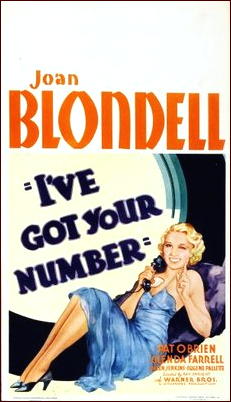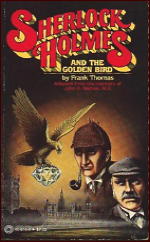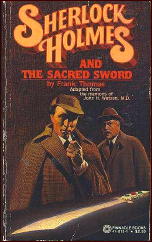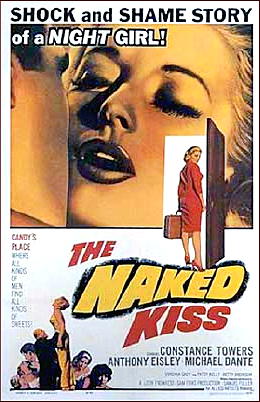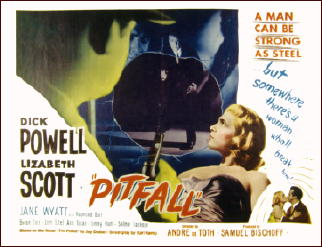February 2012
Monthly Archive
Mon 6 Feb 2012
PulpFest 2012:
Thursday, August 9, 2012 – Sunday, August 12, 2012
PulpFest 2012 continues the proud tradition of a summer pulp con, now entering its 41st year. PulpFest is the summertime destination for fans and collectors of vintage popular fiction and related materials. It will be held at a new venue, the Hyatt Regency in downtown Columbus, Ohio. It will begin on Thursday evening, August 9th and continue until Sunday afternoon, August 12th.
PulpFest continued to grow in 2011 with more than 430 registrants. It was the largest crowd ever for a summertime pulp con. Reviews were generally very positive, from Walker Martin’s “…when the dealer’s room opened officially, it was obvious that this was another rousing success,” to Ron Fortiers’ “…a truly fun and exciting program with a little of something for all pulp enthusiasts,” and newcomer Sean Levins’ “This was, without a doubt, the best convention I’ve ever been to!”
Sellers of pulp magazines, vintage paperbacks, and other paper collectibles and related items are already filling up our exhibit space. There will be more than 100 tables of pulps, books, vintage comics, original art, B-movies and serials, and similar items available for sale, daily from 9 AM until 5 PM. The evening hours, from 7 PM until midnight, will see a variety of programming.
2012 marks the 100th anniversary of the publication of Edgar Rice Burroughs’ “Under the Moons of Mars,” better known by its book title A Princess of Mars and, more recently, John Carter, a major motion picture from Disney. Robert E. Howard’s Conan the barbarian will also be 80 years old in 2012. PulpFest will be celebrating both of these occasions during their highly regarded evening programming. The award-winning science-fiction writer and noted Burroughs authority, Mike Resnick, will also be appearing as the convention’s guest of honor. Author readings and an art show featuring work by illustrators Jim and Ruth Keegan and, possibly, Mark Schultz, are also planned.
For further information, please visit the convention’s website at https://www.pulpfest.com/ or write to David J. Cullers, 1272 Cheatham Way, Bellbrook, OH 45305 or via email at jack@pulpfest.com.
The contact phone number for the hotel is 1-614-463-1234. Be sure to mention PulpFest 2012 when booking a room to get the convention rate. Hotel reservations can also be through the convention’s website through a dedicated link to the Hyatt Regency Columbus.
Price: $15.00 – $35.00
Member Discount: A three-day prepaid membership will cost $30. Send payment to David J. Cullers, 1272 Cheatham Way, Bellbrook, OH 45305. Payment at the door will be $35 for a three-day membership. Daily memberships will cost $15.
Sun 5 Feb 2012
Posted by Steve under
General1 Comment
Doug Anderson has just started a new blog focused on “Lesser Known Writers” of weird fiction.
He says in part: “…many of the authors covered wrote supernatural fiction and are today fairly forgotten. Most of the entries are illustrated with photographs and dust-wrappers. Some of the authors wrote for Weird Tales (e.g., Bassett Morgan, and Lyllian Huntley Harris). Others wrote supernatural novels (Marion Fox, and C. Bryson Taylor). Interested in cricket fantasies? Check out the entry for Alan Miller.”
Authors covered so far:
Vivian Meik (with newly discovered information), author of Devil’s Drums (1933)
C. Bryson Taylor, author of the vampire novel In The Dwellings of the Wilderness (1904)
Marion Fox, author of Ape’s Face (1914) and The Mystery Keepers (1919)
Blanche Bloor Schleppey, author of The Soul of a Mummy (1908)
Alan Miller, author of Phantoms of a Physician (1934) and Close of Play (1949)
Lyllian Huntley Harris, author of one known short story in Weird Tales, the subject of a later-day fraud
Bassett Morgan, prolific Weird Tales author
And many others, with more to come.
Sat 4 Feb 2012
REVIEWED BY GEOFF BRADLEY:
WITHOUT MOTIVE. ITV, UK. Series One, Fall 2000, 6 x 1 hour, less adverts. Ross Kemp, Kenneth Cranham, Jamie Foreman, Hazel Ellerby, David Kennedy, Lou Gish, Sean Murray, Jane Hazlegrove.
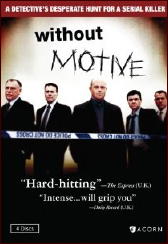
Without Motive doesn’t have the same philosophical ambitions about the nature of crime as did the recent Tough Love [reviewed here ]. It is an investigation, pure and simple, of a series of rapes and murders committed in the Bristol and South Wales areas.
Taking title lead is Ross Kemp as DC Jack Mowbray, who is part of the investigating team. We see him at work and at home where the stresses of the investigation cause friction and create problems. The investigation drags out over a year and though suspects are found it is impossible to find evidence to convict.
The pressure mounts on the team leader, Detective Superintendent Henderson, played superbly by veteran Kenneth Cranham, but suddenly (in episode 6) the killer makes a mistake.
Enjoyable watching without being any great shakes and a little disappointing, as often, in its ending. Kemp was enticed by ITV away from his starring role in the BBC’s EastEnders with the promise of lead dramatic roles but so far he has done little to suggest he has the acting range to cope.
— Reprinted from Caddish Thoughts #87, November 2000.
NOTE: A second series was aired in 2001. Both seasons are available on DVD in the US in a fairly expensive box set of four disks.
Sat 4 Feb 2012
Posted by Steve under
Reviews1 Comment
REVIEWED BY RAY O’LEARY:
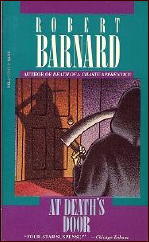
ROBERT BARNARD — At Death’s Door. Scribner’s, hardcover, 1988. Dell, paperback, 1989. First published in the UK: Collins Crime Club, hardcover, 1988.
— Death and the Chaste Apprentice. Scribner’s, hardcover, 1989. Dell, paperback, 1990. First published in the UK: Collins Crime Club, 1989.
In At Death’s Door, Cordelia Mason, the daughter of actress Dame Myra Mason, is writing a tell-all biography of her (still-living) mother and decides to visit her half-brother, who is caring for their senile father, once a successful novelist. Cordelia was the outcome of a brief affair between the two, and wants to go through her famous father’s private papers from that period.
Her mother, anxious not to be painted as “Myra Dearest,” also visits, to keep Cordelia from going through with her plans. Shortly after a heated argument between mother and daughter, Dame Myra is found murdered.
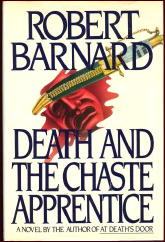
In The Chaste Apprentice, the Ketterick arts festival is staging an Elizabethan play, “The Chaste Apprentice of Bowe,” in the courtyard of an old English Inn and everyone involved in the production — plus a number of Arts Festival participants — is staying there.
The one incongruous character in the entire milieu is the new manager of the Inn, who spends his brief hour upon the page butting into others’ affairs with unwelcome advice and/or ferreting out their secrets for psychological blackmail. I somehow managed to keep my jaw from dropping in astonishment when he turned up murdered in his room after the first performance.
I don’t know, but it somehow seemed to me that Barnard couldn’t seem to hit his stride in either of these efforts. The characters are serviceable but hardly memorable, and neither story has any great originality, except for a slight twist at the end of Door, unrelated, alas, to the plot.
Sat 4 Feb 2012
Posted by Steve under
Reviews[2] Comments
IT IS PURELY MY OPINION
Reviews by L. J. Roberts
DANA STABENOW – Though Not Dead. St.Martin’s Press/Minotaur Books, hardcover, February 2011; paperback, November 2011.
Genre: Licensed Investigator. Leading character: Kate Shugak; 18th in series. Setting: Alaska.

First Sentence: The black death didn’t get to Alaska until November.
Old Sam, a tribal leader and surrogate father to PI Kate Shugak, has died. He has made Kate his executor and primary heir but some of his bequests come as a surprise. Kate hadn’t known how much land Sam owned, including a homestead within gold-mining country.
Then there’s the letter simply saying, “Find my father,†and how does this tie to a missing Russian icon which was a tribal artifact? Kate doesn’t know but something thinks she does as they keep trying to kill her.
In the meantime, Kate’s lover, Sgt. Jim Chopak, has been summoned home for his father’s funeral. The relationship between him and his mother has always been chilly, but never more so than now that his father bequeathed Jim his locked writing box in which he finds a photograph of his mother and someone Jim has never before seen.
It is nice to see Ms. Stabenow returning to a more serious style. Not that her trademark humor is not longer apparent — it is — but this story is more layered, complex and a bit more serious than previous, recent entries.
Maps are a useful and wonderful way to provide the reader with a sense of location and perspective; I’m glad they are there. Complimenting them is an incredible ability to create a sense of places and people through Ms. Stabenow’s vivid descriptions:
“… Kate almost stumbled over a pair of porcelain dogs guarding a high, round, spindle-legged table covered with china figurines dressed like characters out of the Angelique novels.â€
Okay, I’ll admit being partial to that particular description as I loved the “Angelique†books, but the scene of Kate’s wolf/dog Mutt interacting with wild wolves against the snow under a full moon also becomes one you are not reading, but seeing.
Characters come to life as well: “Judge Singh…had such immense dignity that she always seemed to be attired in her robes…†and “At the desk sat Jane Silver, who looked like she out to be hunched over a steaming cauldron chatting in chorus with the other two weird sisters.â€
The people and relationships are real, including Kate’s relationship with Mutt, which adds, funny, touching and fearful moments to the story. The inclusion of a surprising and unexpected character only adds to the story.
The story itself is very good and very much about relationships. They really are the point from which the various lines of the story evolve.
It’s not a perfect story. At times, it felt as if there was one thread too many and it bogged down. I found myself wanted to skip portions, although I didn’t, but it did feel overly long; too many scenes with Mutt, not enough “mystery†or flow to the story as I’d have hoped. Perhaps it’s just a case of my expecting more from an author who is so good.
Don’t misunderstand; I enjoyed the book very much for its characters, humor, sense of people and place, and tense scenes of strength and determination to survive. Although the plot could have been a little tighter, I’ll be right there read to buy the next book in the Shugak series.
Rating: Good Plus.
Fri 3 Feb 2012
I’VE GOT YOUR NUMBER. Warner Brothers, 1934. Joan Blondell, Pat O’Brien, Allen Jenkins, Glenda Farrell, Eugene Pallette, Gordon Westcott. Director: Ray Enright.
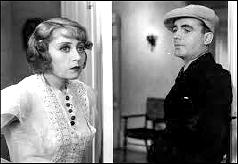
This light and lively (and just a little risque) pre-Code comedy is well worth your time and money, if the opportunity should ever come your way. Pat O’Brien and Allen Jenkins, his somewhat dour sidekick, play a couple of telephone company repairmen, and I’ve Got Your Number is filled to the brim with tales of their various adventures.
Among which are being asked to install longer cords in a luxury apartment inhabited by a coterie of beautiful call girls (if I can fill the gaps, then you should be able too, but one blonde’s backless dress goes a long way in giving it away); unmask a phoney medium (Glenda Farrell) who’s using her phone line to flimflam her clientele who think she’s connecting them to their dearly departed: and finding a new job for a good-looking hotel switchboard operator (Joan Blondell) who lost her job playing along with a practical joke that turned out not to be so funny.
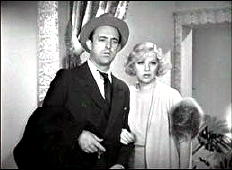
And it also turns out that Pat O’Brien is quite the operator himself. Getting Joan Blondell to agree to go out for dinner with him is quite a task, but it’s one that he’s more than up far – what with his very persuasive rat-a-tat non-stop vocal ability. It is great, as always, to see a man with a way with women in action, even if he is so good-looking.
Allen Jenkins claims to hate the ladies, but when he turns up later on with Gloria Farrell as his lady friend on a double date with the other two, we are not surprised (and, I have to admit, just a little jealous).
Most of the tale is centered on Joan Blondell and her propensity for getting into trouble. It’s not her fault – well, not completely – when some bonds go missing while she’s on duty at the switchboard on the new job O’Brien gets for her, and getting her out of trouble again takes all of her brash young suitor’s formidable abilities.
What makes the story the most fun, though, is that the players seem to be enjoying themselves as much as they’re hoping the members of the audience will, and I think they must have.
Fri 3 Feb 2012
FRANK THOMAS – Sherlock Holmes and the Treasure Train. Pinnacle, paperback original, March 1985.
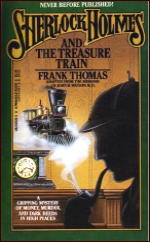
Frank Thomas was — just in case you’re wondering if he might have been — the movie actor who gained considerable fame playing the lead role in the Tom Corbett, Space Cadet series on the small screen, a role so well known that I’m sure it stayed with him the rest of his life. After his TV days were over, though, he also became an expert on the game of bridge and (most relevant to us here) a mystery novelist.
Besides a handful of short stories about Sherlock Holmes, Thomas wrote four novels about the character, of which this was the third. Watson, of course, in all of them as well, as the purported narrator, and so is Mycroft Holmes – at least in Treasure Train – but (as far as I recall) never onstage. He’s only referred to, and as it so happens, quite often.
There are a couple of other short cases to deal with at first, but the crux of the matter of hand is the theft of £500,000 in gold that has been stolen from a well-guarded and armored railroad car as it’s being transported across the English countryside. If it sounds like an “impossible crime†to you, it did to me at first as well, but Holmes makes quick work of that part of the mystery, alas.
The problem, then — having become one of whodunit, not how — loses momentum quickly as the intricacies of international finance and banking come into play. Thomas does his best to keep things interesting through the middle of the book, but I found my eyelids getting heavier and heavier throughout the denser chapters, of which there were, unfortunately, too many.
Thomas also does his best to make the reader believe his characters are the same as those created by Conan Doyle, but while solidly done, he never convinced me. Two gentlemen. good detectives each, with the same names and outer mannerisms as the real Holmes and Watson? Yes, I found myself going along with that, but I also regret to report that clones, even above average ones, are seldom little more than stand-by replacements for the real thing.
The Sherlock Holmes novels by Frank Thomas —
Sherlock Holmes and the Golden Bird. Pinnacle, pbo, 1979.
Sherlock Holmes and the Sacred Sword. Pinnacle, pbo, 1980.
Sherlock Holmes and the Treasure Train. Pinnacle, pbo, 1985.
Sherlock Holmes and the Masquerade Murders. Medallion, pbo, 1986.
Thu 2 Feb 2012
REVIEWED BY DAN STUMPF:
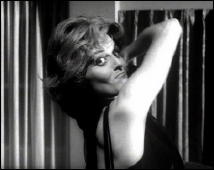
THE NAKED KISS. Allied Artists, 1964. Constance Towers, Anthony Eisley, Michael Dante, Virginia Grey, Patsy Kelly, Marie Devereux, Karen Conrad. Screenwriter/director: Sam Fuller.
The Naked Kiss is every bit as cheap as Murder by Contract [reviewed here ], but more passionate and brilliant by far. Sam Fuller, the writer/producer/director of this thing, is often described as a primitive Genius — sort of a filmmaker savant — but I have always been impressed by his sophistication; Fuller had an uncanny ability to mix metaphors and genres almost at will without ever putting a foot wrong, that seems anything but Primitive.
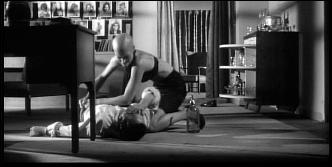
The Naked Kiss starts off like a mid-60s Porno Film, with a hooker beating her pimp (make that ex-pimp) nearly to death, and ends up with a soapy, sentimental scene that looks to have been lifted from Peyton Place.
Along the way, it provides some of the bluntest and most disturbing imagery you can encounter in the movies, juxtaposing crippled children, Beethoven, crooked cops, Goethe, prostitution and… well, not Redemption but Self-Respect.
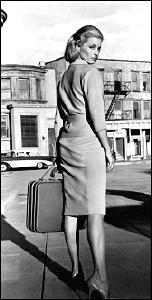
This one is photographed by Stanley Cortez, the very best Cheap Photographer in Hollywood, whose credits include The Magnificent Ambersons, Shock Corridor, Night of the Hunter, Abbott and Costello Meet Captain Kidd, and They Saved Hitler’s Brain. Fuller and Cortez were kindred spirits, it seems, and together they turned out a film consistently fascinating to watch as well as to look at.
Equally remarkable is Constance Towers’ performance as Kelly, the reformed hooker whose efforts to find a place in society initiate the plot. Her face, lovingly framed by Fuller and photographed by Cortez, is one of those miracles that sometimes occur in very good movies: Strong, smooth, intelligent features around the coldest, saddest eyes this side of Marley’s Ghost.
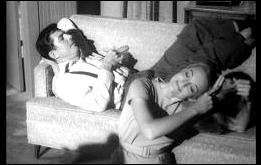
With a look like that, Towers doesn’t even need a script, much less any acting ability, but the fact that she is here given a role worthy of her talents makes it all the better.
Fuller’s script is as goofy as ever, a rapid-fire panoply of lines that read more like ultimatums than dialogue, but he and Towers somehow make it all seem extraordinarily Not Dumb.
Only Fuller could get away with having a hooker who quotes Goethe but mispronounces the name, or showing her vanquished pimp falling on a calendar marked at July 4th (Independence Day, get it?) without seeming unbearably pretentious. Perhaps it’s because he has something to be pretentious about.
Thu 2 Feb 2012
A 1001 MIDNIGHTS Review
by Marcia Muller
CHARLES ALVERSON – Goodey’s Last Stand. Houghton Mifflin, hardcover, 1975. Playboy Press, paperback, 1977, 1979.
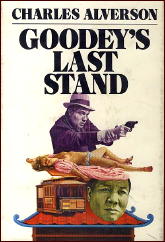
Joe Goodey’s career as a private investigator is launched when he mistakes the mayor’s cousin for a gunman and shoots him, an error that forces his resignation from the San Francisco Police Department.
His boss, Chief of Detectives Ralph Lehman, promises to wangle Goodey a PI’s license as soon as emotions cool, and Goodey takes off — for Mexico, he thinks — stopping at a seaside motel just over the county line. But by the next morning, Lehman tracks Goodey down and forces him to take his first case, dangling the promise of an immediate license.
A stripper named Tina D’Oro — whom Goodey knew slightly but San Francisco mayor Sanford F. Kolchick knew altogether too well — has been stabbed to death, and the mayor wants the homicide cleared up quickly without involving his name or risking his reelection.
Goodey begins by studying Tina’s diary, which has been stashed in the safe of Deputy Chief of Police Bruno Kolchick (by no coincidence, the mayor’s brother), but finds little to go on. “You could pick up more gossip on a bus ticket,” Goodey concludes.
Goodey’s investigation takes him to the strip clubs of North Beach; into the back alleys of Chinatown; to the offices of a plastic surgeon who claims to have “created” Tina’s body; to the posh home of the mayor himself (who inexplicably lives outside the city in Marin County across the Bay); and even, for a while, to jail. Along the way he finds a Chinese girl asleep in his bed, a dead man on his stair landing — and his true calling as a private eye.
This book is rich in San Francisco background and colorful characters, and includes a nice ongoing bit about Goodey’s Chinese landlord, but Goodey’s wisecracking manner and lone-wolf posture make him virtually indistinguishable from scores of other stereotypical fictional private eyes. Goodey has appeared in one other adventure, Not Sleeping, Just Dead (1977).
———
Reprinted with permission from 1001 Midnights, edited by Bill Pronzini & Marcia Muller and published by The Battered Silicon Dispatch Box, 2007. Copyright © 1986, 2007 by the Pronzini-Muller Family Trust.
[UPDATE] 02-02-12. And the two books of Joe Goodey’s adventures were all there were. For more about the author, check out his entry on Wikipedia here, where you’ll also find this description of Goodey’s Last Stand in a review in The New Yorker, where the novel is called “the next best thing to finding a new and unsuspected Raymond Chandler phantasmagoria.â€
Wed 1 Feb 2012
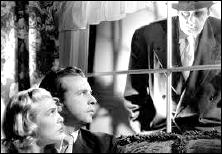
PITFALL. United Artists, 1948. Dick Powell, Lizabeth Scott, Jane Wyatt, Raymond Burr. Based on the novel The Pitfall by Jay J. Dratler. Director: André De Toth.
Call this one “suburban noir,†if you will, and as I’ve seen it described as by at least one other reviewer, but “noir†it is, there’s no doubt about it. This was co-star Lizabeth Scott’s sixth film, and while her first one. You Came Along, [reviewed here ], was an uneasy combination of comedy and sentimental romance, most of the movies she made from there on were noir all the way, beginning with her second, The Strange Love of Martha Ivers (1946).
Dick Powell plays an insurance executive in Pitfall, but even though he has a beautiful wife (Jane Wyatt) and a young son at home, somewhere in the greater Los Angeles area, he’s starting to feel caged in, as though life is slipping away, that his opportunity for some adventure in his everyday existence is about to pass him by.
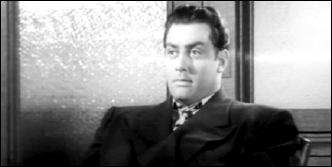
Enter Raymond Burr, a private eye who’s found the girl friend (Lizabeth Scott) of a guy who’s in jail for embezzlement. The company Powell works for is responsible for the loss, but most of the money was spent on fancy things to give her.
Powell pays her a visit, and while she agrees to return everything she can, she mocks him lightly for being such a dull, company-oriented guy. Thus challenged, a date for drinks turns into an overnight stay. This does not go well with Raymond Burr’s character, who has had his own eyes on the blonde beauty, and he has already told Powell so.
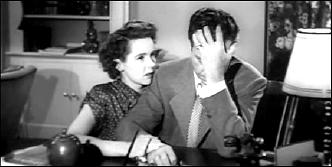
Burr beats Powell up rather badly, and when Mona (Lizabeth Scott) discovers the latter is married, she wants the affair to end. Powell agrees, but as far as Burr is concerned, he is not the kind of fellow that takes no for an answer.
I have discovered that whenever Lizabeth Scott is in a movie like this, she is always the center of attention in the film, as far as I’m concerned. Not quite so, this time. She’s an innocent victim this time, her only fault being that of attracting the wrong type of guy: from the embezzler, to the family man looking for a fling, or Raymond Burr’s character, an ugly hunk of a man whose glowering, hate-filled eyes demand your full attention throughout the film, even though he’s billed only fourth.
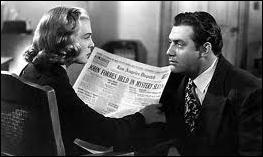
There’s no sympathy in this film for Dick Powell, whose character is shallow and weak and in over his head as far as extracurricular activity is concerned, and he soon comes to know it. But he’s essentially an honest man and he does do his best on Mona’s behalf.
I can’t tell you how the ending comes out – even whether it’s a happy one or not, for example – but when the tale is over, it is very very clear who – no, sorry, I can’t tell you that either.
If you’re a fan of film noir, don’t miss this one.
« Previous Page — Next Page »






